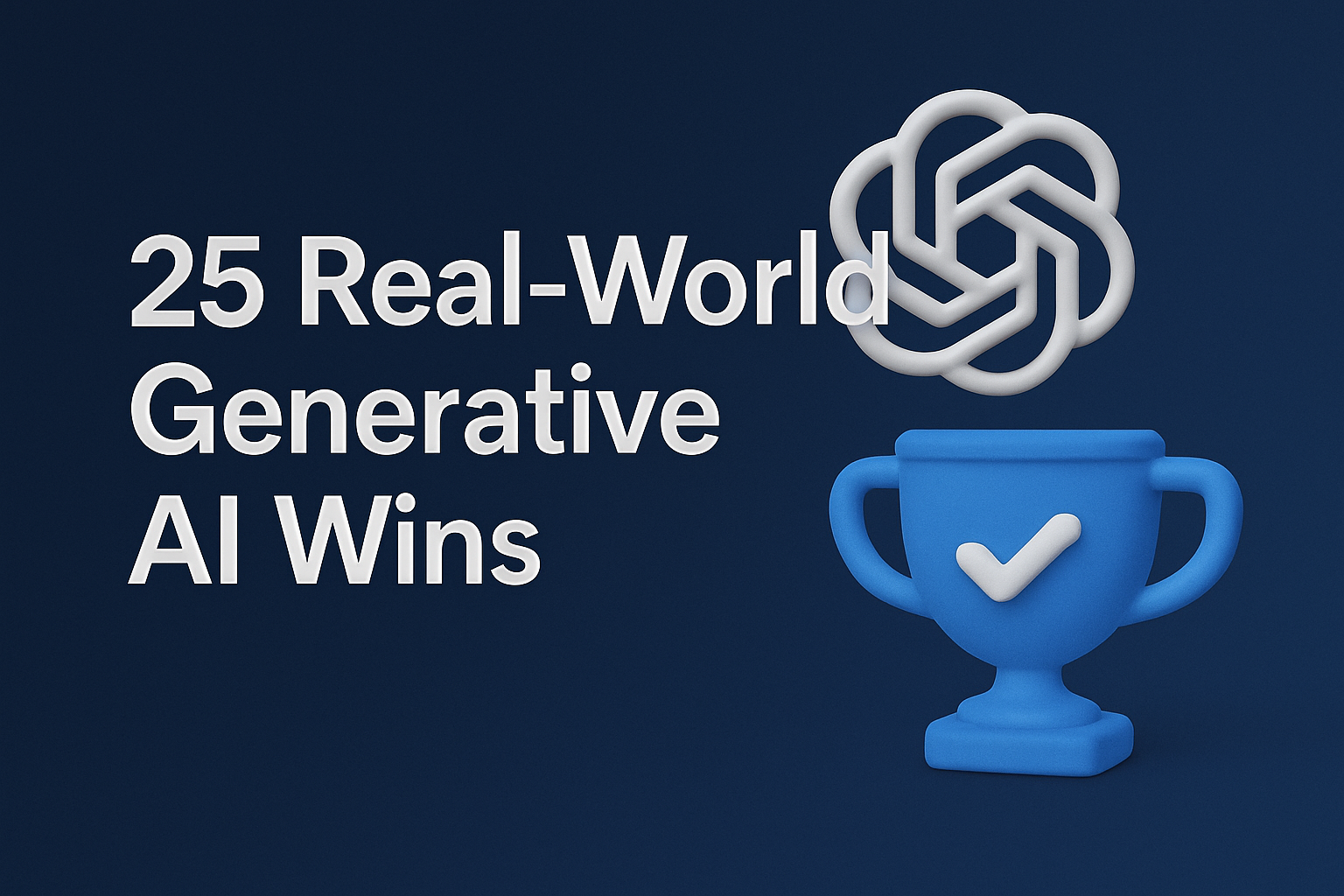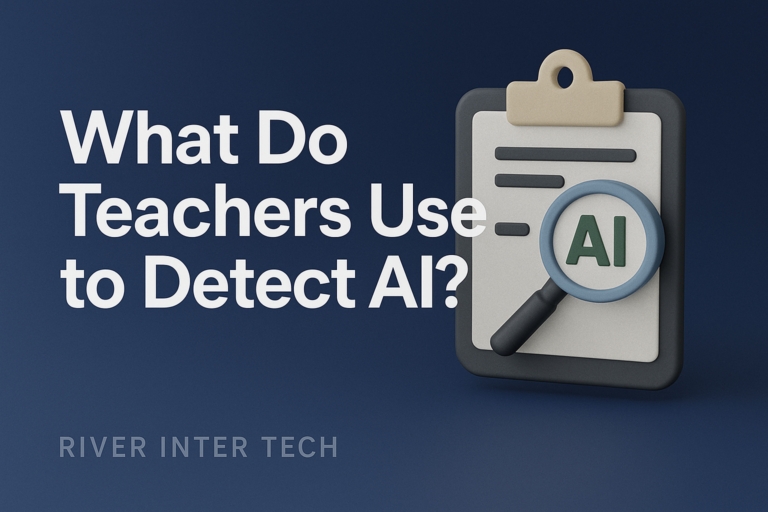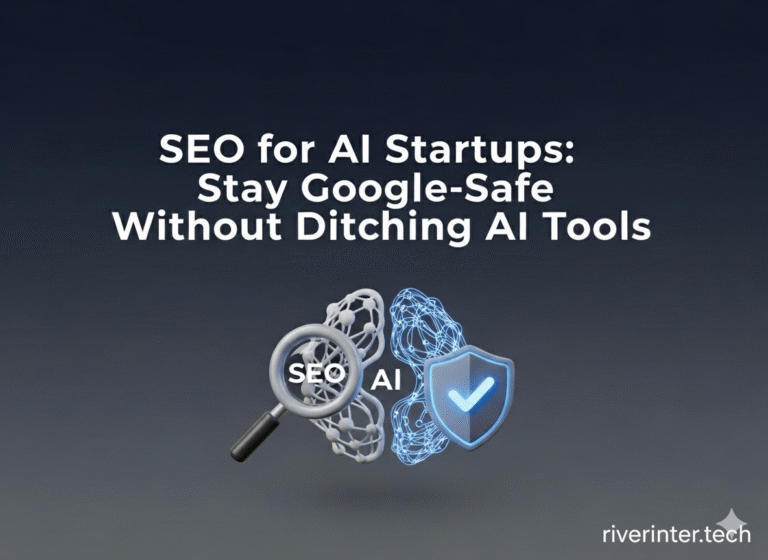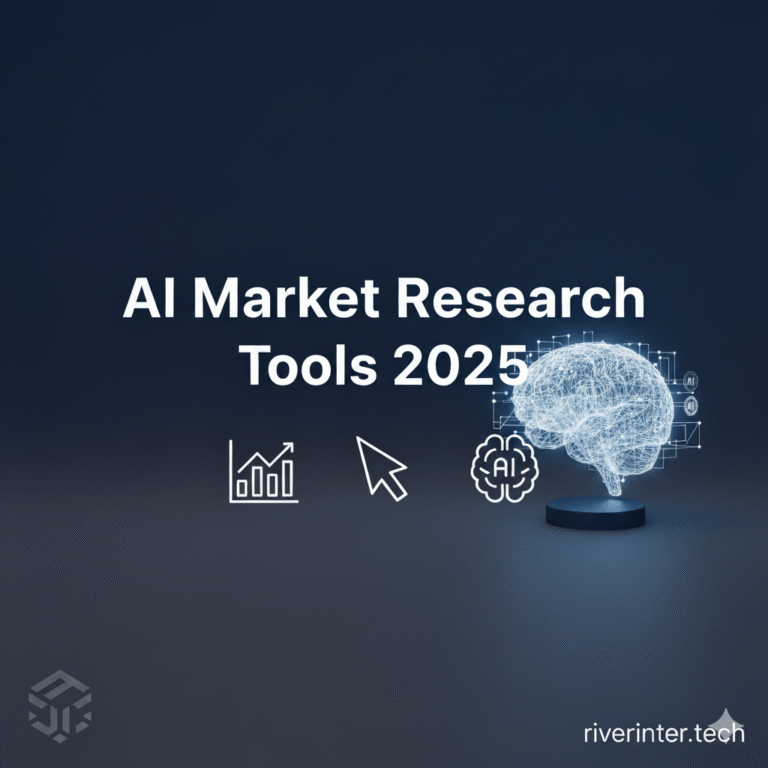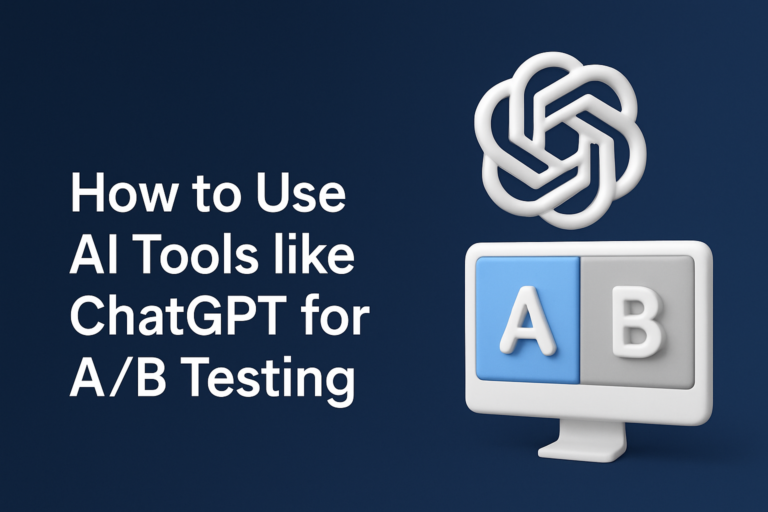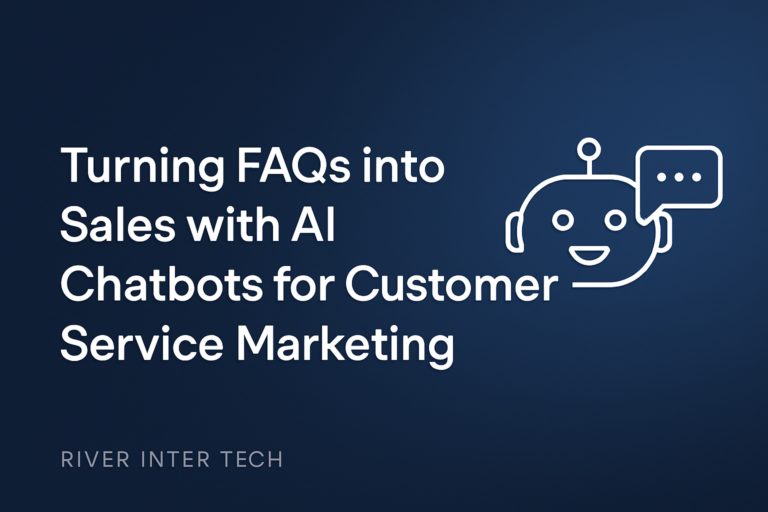Real-World Generative AI Wins: 25 Must-Know Case Studies
You’ve heard the buzz. But here’s the twist. The brands using generative AI aren’t just testing tools. They’re flipping entire industries. This isn’t hype. It’s the new playbook. From fashion to finance, AI doesn’t just assist—it creates, writes, designs, and decides. But here’s the part most miss: the how. These 25 ai case study examples reveal what the headlines don’t. You’ll see what worked, where, and why it’s happening faster than expected. Ready to peek behind the curtain? Because once you see how these names do it, your next move won’t look the same. It’s the impact of ai case studies coming to life.
1. Coca-Cola’s “Create Real Magic” Campaign
Coca-Cola didn’t just launch a campaign. They invited the world to co-create. Using OpenAI and DALL·E, they handed over the creative wheel. Fans designed art. Coke turned it into ads. What started as a gimmick flipped the idea of ownership. And here’s the kicker: engagement skyrocketed. The brand didn’t shout louder—they handed the mic to customers. That’s how you blend AI with community. It’s not about ai replace creatives. It’s about multiplying them, as this ai case study shows.
2. L’Oréal’s AI Beauty Revolution
L’Oréal doesn’t guess what customers want. They let AI figure it out. Using multilingual tools, they scale content globally—fast. No delays. No missed trends. And in R&D? AI helps design new products based on emerging data. The result? Less risk. More relevance. When beauty moves fast, you can’t afford to lag. L’Oréal gets ahead by using AI not just as a tool, but as a thinking partner. This approach exemplifies how ai scale can give brands a competitive edge.
3. Stitch Fix’s Personal Style Assistant
Stitch Fix doesn’t send clothes. They send curated confidence. That personal touch? It’s AI behind the curtain. Using GPT-like models, they generate notes tailored to each customer’s style. No two messages are alike. It feels human because it’s built from human patterns. And here’s the real magic: these tiny messages lift customer satisfaction and drive repeat orders. The AI doesn’t ai replace stylists. It sharpens them, showing how AI can enhance the personal touch at scale.
4. Canva’s Magic Design Engine
Drag. Drop. Done. Canva’s “Magic Design” changed how people create. Users upload content. Canva does the rest. Layouts, headlines, even copy—done in seconds. It’s not just about speed. It’s about confidence. Anyone can feel like a designer. With AI in the background, small businesses now look polished without hiring anyone. Canva didn’t add features. They removed friction. This ai case study demonstrates how AI can enable anyone to design with confidence, acting as a digital ai cover for users.
5. Autodesk’s Smart Part Creator
What if software didn’t just model parts—but designed them? Autodesk made it real. Their generative design tool suggests shapes. Engineers set the parameters, and the AI does the heavy lifting. The process is not just automated; it’s ai auto innovation in action. The resulting parts are lighter, stronger, and often look like nothing a human would have created. This level of ai enhanced design is now standard in engineering.
6. BuzzFeed Didn’t Just Write Content—They Let AI Shape It
BuzzFeed saw the content curve dip. So they built something people couldn’t ignore. Using GPT, they launched custom quizzes that felt like they knew you. They didn’t just ask questions. They remembered how you think. That’s what pulled people in. It wasn’t just faster content. It was stickier. Time on site jumped. Shares increased. BuzzFeed didn’t abandon writers. They gave them a tool that filled the gaps—ideas, headlines, punchlines. This wasn’t about replacing editors. It was about unlocking new formats fast. The brand’s ai job was to make content engaging for everyone.
7. IBM Turned AI Into a Business Brain
IBM used Watsonx to tackle a simple but brutal problem: scattered knowledge. Reports. Docs. Emails. All of it trapped. So they trained AI to pull answers from across systems in seconds. The payoff? Teams stopped wasting time digging. Customers got faster help. Decisions moved quicker. And trust? It grew. Because the answers weren’t guesses. They came from the company’s own data. IBM didn’t build a chatbot. They built a second brain. That’s the edge—knowing more, faster. This ai company is setting the standard for enterprise knowledge management.
8. Runway Gave Video Creators a Shortcut to Magic
Video editing takes time. Runway asked: what if it didn’t? They built AI tools that remove backgrounds, add effects, even animate scenes—all with a few words. Creators stopped fiddling and started producing. Turnaround shrank. Output grew. And quality? Still there. Runway didn’t aim for Hollywood. They built for creators on deadlines. The kind who want to move fast without breaking flow. AI didn’t just edit video. It unlocked velocity. These tools act as a type ai assistant for creative professionals.
9. Klarna Turned Shopping Into a Conversation
Klarna rolled out a shopping assistant built on OpenAI tech. But here’s what made it work: it felt personal. Not pushy. Not robotic. Users typed what they wanted, and the assistant found it—fast. It didn’t suggest random deals. It listened. Conversion rates went up. So did satisfaction. Klarna didn’t build a chatbot. They built a shopper’s shortcut. The AI acted like a friend who knows your style and doesn’t waste your time. Klarna’s ai job is to make shopping seamless.
10. Shopify Helped Sellers Write Product Copy in Seconds
Writing product descriptions is a grind. Shopify fixed that. Their AI tool writes listings automatically. Sellers pick a tone. AI fills in the rest. No more copy-paste. No more guesswork. And the impact? Pages launched faster. More items got listed. Shoppers got clearer info. The tool didn’t just help merchants write. It helped them sell. That’s the point. The fewer blocks between idea and store, the more sales follow. Shopify proves how ai enhanced workflows boost business results.
11. The New York Times Let AI Test Headlines in Real Time
The New York Times didn’t use AI to write the news. They used it to test how people read it. AI suggested headline variants, tracked clicks, and kept learning. Editors didn’t lose control. They gained insight. When engagement mattered, AI helped pick the version that hit harder. Not just more views—but more time spent reading. That’s the real win. They didn’t guess what would work. They proved it, fast. Quietly, AI turned headlines into data-driven assets. It’s an ai case study in editorial transformation.
12. Adobe Firefly Built Creativity Straight Into the Workflow
Adobe didn’t make a new tool. They baked AI right into Creative Cloud. Designers could now type a phrase—and generate backgrounds, edit images, or blend styles in seconds. What changed? Momentum. No more hunting through menus. No more switching apps. Firefly cut the lag between thought and execution. Designers stayed in flow. Projects moved faster. Clients noticed. Adobe didn’t disrupt the creative process. They removed its slowest parts. That’s how you expand image ai to fit every project need.
13. Duolingo Put GPT-4 Inside the Learning Experience
Duolingo wanted users to stay curious. So they added AI that talked back—literally. “Explain My Answer” gave instant feedback. The in-app tutor walked learners through mistakes. It didn’t just mark things wrong. It taught why. Users stuck around longer. They improved faster. Learning started to feel like a conversation, not a quiz. Duolingo didn’t just use GPT-4 as a backend engine. They made it part of the user experience. The result? Learning felt human again. Duolingo’s story is one of ai scale and personalization.
14. Notion Used AI to Keep Knowledge Alive
Notion took AI beyond writing help. They turned it into an assistant that organizes, edits, and even rewrites your notes. It summarizes long docs. Generates action lists. Suggests structure. That kind of lift doesn’t just save time. It saves momentum. People stopped treating Notion like a digital shelf. They started using it like a creative partner. The difference? Less clutter. More clarity. Notion didn’t just help users write. It helped them think better. This is the advantage of an artificial intelligence company leading knowledge work.
15. Pixar + NVIDIA Used AI to Move Stories Faster
Animated movies take years. Pixar teamed with NVIDIA to change that. AI helped animate expressions, fill frames, and simulate textures—without slowing down artists. The big shift? It wasn’t about shortcuts. It was about speed with control. Teams could explore more versions, test more scenes, push visuals further. AI didn’t take over. It opened up creative space. And when imagination has more room, stories go further. Pixar’s approach is an ai company redefining what’s possible in animation.
16. Replit Let AI Write Code While You Type
Replit didn’t just add autocomplete. They built Ghostwriter—a real-time coding assistant that finishes your thoughts. New coders move faster. Pros debug quicker. It suggests code. Catches errors. Explains what’s happening. And it’s always on. The power isn’t just in speed. It’s in confidence. You write a little. AI expands the rest. Complex problems feel lighter. Ghostwriter didn’t replace developers. It removed the blank screen. And once that’s gone, creativity moves fast. It’s a type ai solution built for makers.
17. IKEA Used AI to Rethink Interior Design
IKEA turned phone photos into design plans. Customers upload their space. AI shows how it could look—new layout, furniture, lighting. It’s not guesswork. It’s tailored. Suddenly, shoppers saw what fit before buying. That broke a barrier. Cart size increased. Returns dropped. IKEA didn’t just sell furniture. They sold vision. AI wasn’t the star. The customer was. The tech just cleared the fog. IKEA demonstrates how ai auto planning can drive better buying experiences.
18. Google Workspace Made Docs Think With You
Typing in Docs used to mean you did the heavy lifting. Then Google dropped Duet AI. It helps write emails. Drafts summaries. Builds Slides from ideas. Users talk. AI formats. Fast. Clean. Smart. The shift? You stay in the zone. No more jumping to other apps or searching templates. Everything flows. Duet doesn’t just support your work. It speeds it up—and keeps it sharp. Google’s work is an ai case study in productivity transformation.
19. LinkedIn Let AI Polish Profiles and Posts
LinkedIn users get stuck writing about themselves. So LinkedIn added AI to write for them. It rewrites summaries. Drafts posts. Suggests updates. That small help leads to big changes. More complete profiles. More frequent posting. More visibility. Professionals who used to hesitate now sound confident. AI didn’t fake authenticity. It uncovered it. LinkedIn gave users a voice—faster. They even use AI to help generate ai reviews and recommendations.
20. Salesforce Put AI in the Hands of Sellers
Salesforce didn’t just talk AI. They embedded it. Einstein GPT writes emails. Fills in sales notes. Suggests follow-ups. And it does it in the seller’s tone. Not cold. Not spammy. Human. Reps close deals faster. Less time clicking. More time talking. That’s what mattered. Salesforce didn’t use AI to automate people out. They used it to keep conversations real and in motion. AI tools also serve as a digital ai cover for sales communication.
21. Netflix Used AI to Choose Thumbnails That Make You Click
Netflix knew one thing moved the needle: the thumbnail. So they trained AI to pick the right image for the right viewer. Not a guess. A match. Someone who loves comedies sees a smiling lead. Drama fans? They get a tense stare. It’s subtle—but it works. Clicks rise. Watch time climbs. Netflix didn’t redesign its app. It redesigned how you feel about a show—before pressing play. Netflix’s expand image ai is a quiet driver of engagement.
22. Microsoft Designer Let You Build Visuals From Just a Prompt
Designer takes what you type and turns it into a finished graphic. Instantly. You say “summer sale flyer.” It builds one. Clean. Branded. Share-ready. You tweak it, or not. It’s fast either way. You don’t need a design team. Or time. Just a thought. Microsoft didn’t aim to replace designers. They gave small teams and solo builders a real shot at big-brand polish. That levels the field. This is the kind of progress ai reviews highlight in digital design.
23. Canva’s Magic Write Broke the Language Barrier
Writing in English is hard. Writing in ten languages? That used to feel impossible. Canva changed that with Magic Write. It drafts headlines, posts, and even captions in different tones and tongues. Global teams use it to launch campaigns without bottlenecks. It’s fast. It’s accurate. And it sounds natural. The win? Consistent messaging across borders. Without back-and-forth. Canva didn’t just make writing easier. They made reach wider. This is a win for any artificial intelligence company expanding into new markets.
24. Meta’s Emu Model Gave Creators Visual Superpowers
Meta built Emu to help creators do more with less. It generates images, enhances photos, even builds new visuals from scratch. What took hours in editing tools now takes seconds. The hook? It fits right into the apps people already use. That means creators stay focused on ideas, not tools. Meta didn’t just upgrade visuals. They collapsed the time between spark and post. And that changes what’s possible. Emu is a great expand image ai showcase.
25. Expedia Turned Trip Planning Into a Chat
Planning a trip used to mean tabs, lists, and stress. Expedia replaced all that with a chat. You tell it what you want—”3 nights in Paris, walkable hotel, no layovers.” AI plans it. Finds the flights. Books the stay. You just approve. It doesn’t feel like booking. It feels like texting a travel pro. And that changes everything. Expedia didn’t add AI to the journey. They made it the guide. This ai case study proves how travel is being reimagined.
Conclusion
The real lesson from these ai case study examples? AI isn’t hype or threat—it’s the quiet engine powering brands, products, and experiences we use every day. From automation and personalization to new business models, ai case studies show what’s already here—and what’s next. If you want to know how top brands move fast and think bigger, follow the data, and learn from every ai company that’s already shifted gears.

